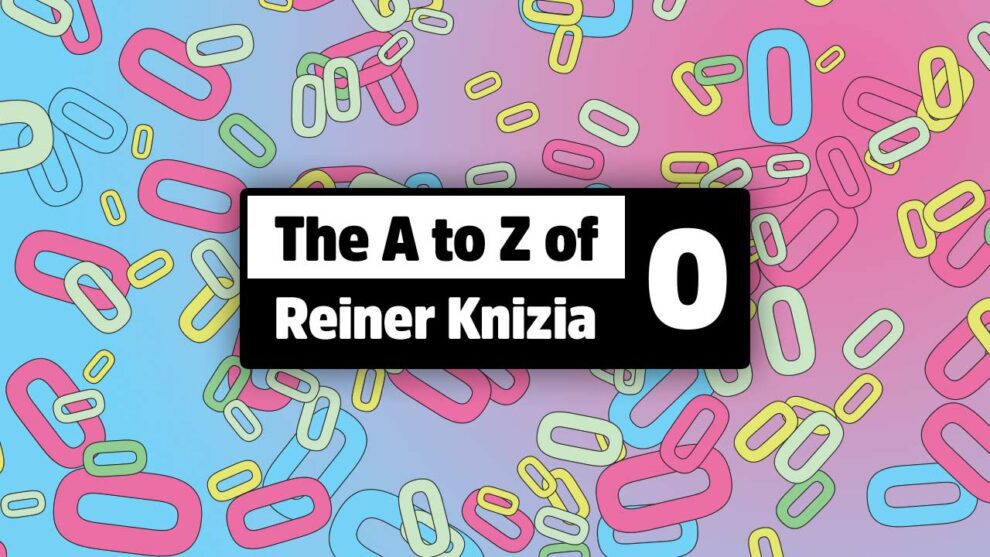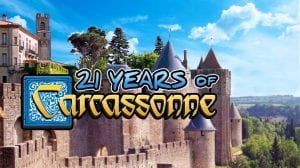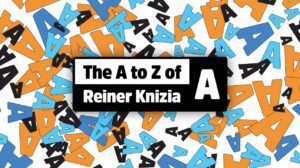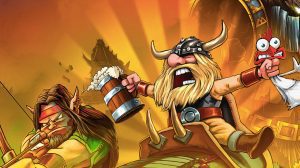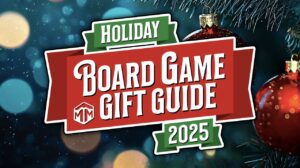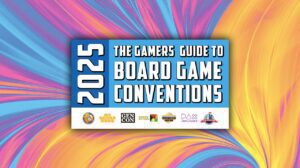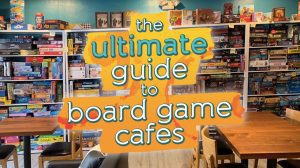The year 2025 marks the 40th anniversary of Dr Reiner Knizia’s career as a board game designer – his first published game, Complica, was released in a magazine in 1985 (although he’d self-published games before then as well).
Since then, Knizia has designed and published over 800 games and expansions, many of which are critically acclaimed. Put simply, Reiner Knizia is the landscape on which all other modern designers build their houses.
To celebrate Knizia’s career and back catalogue, Meeple Mountain are taking things back to basics to consider the ABC of Reiner Knizia: one game for each of the 26 letters of the alphabet.
This time: The Letter ‘O’.
O – Orongo (2014)
Prior to European arrival, the ceremonial village of Orongo on the southwest tip of Rapa Nui (Easter Island) was the centre of a birdman cult, where hunters would race to collect the first sooty tern egg of the season from the nearby islet of Motu Nui. Many fell to their death from the cliffs or were eaten by sharks in their quest for the eggs. In the 2016 Disney film Moana, the titular heroine comes from the fictional island of Motunui, a purposeful reference to both the Motu Nui islet and a settlement in the North Island of New Zealand on order to honour the wider culture of Polynesian people and their islands. The contrast of the colourful children’s film with the deadly egg race is fascinating and on a different website this article might propose some deeper meaning about how death lurks behind even the most idyllic of settings.
Meeple Mountain is, however, a tabletop media outlet and none of this has anything to do with Orongo the game, released by Ravensburger in 2014. You won’t be spending your terns (ha!) climbing for eggs or fending off hungry sharks. In fact, whilst the rulebook tries valiantly at the start, the word ‘Orongo’ doesn’t feature at all beyond the front cover.
‘Another thematically thin offering from Dr Abstract’ you might think to yourself. But, as is often the case with Knizia designs, you’d be wrong. The confusion in this instance isn’t that the theme is subtle or requires any deep analysis (see the Letter ‘E’ for an example of that), but simply that Orongo’s theme has little to do with its title.
Instead, if you want to get an idea of what Orongo is all about, take a look at the box cover:
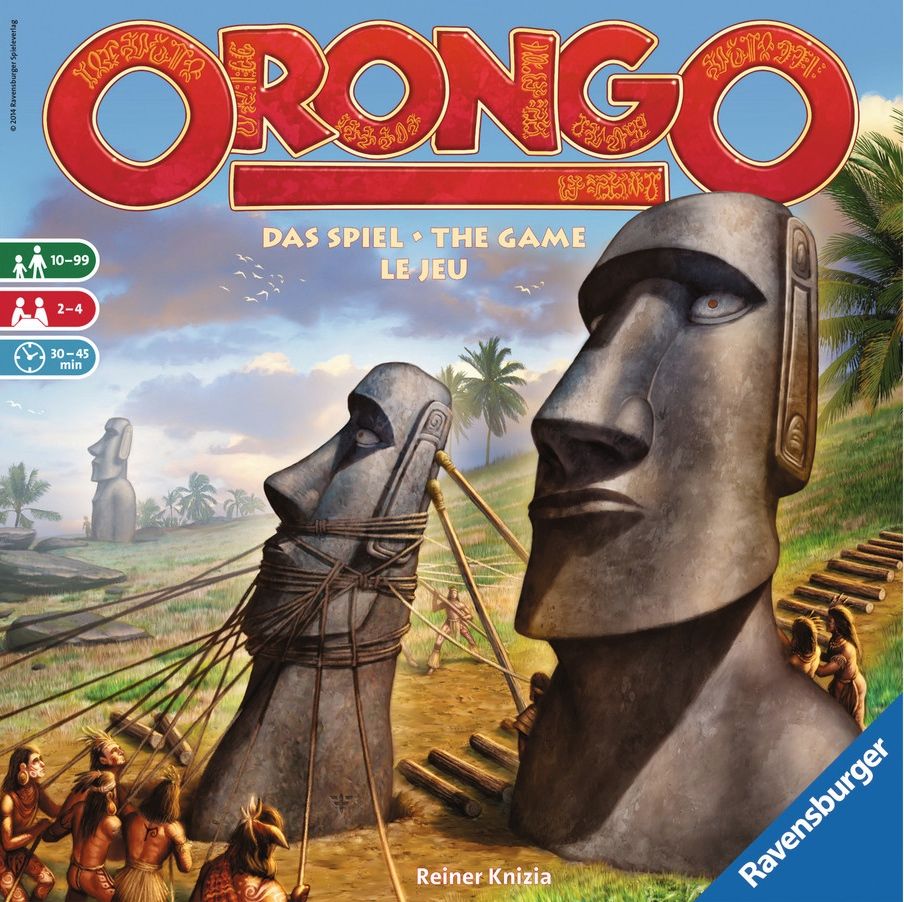
Orongo is about Rapa Nui’s most famous features – the Moai. In fact, Moai would have been a better title, if two other games released in the preceding 7 years hadn’t already used it. Moai are thought to have represented ancient Polynesian ancestors, positioned to face inland over the various tribes of the island. In contrast, the rise of the birdman religion centered at Orongo village is thought to have resulted in conflict with those honouring their ancestors. One of the conditions for building a Moai in the game requires a birdman and a tern nest – an unfortunate choice of resources since Moai construction declined with the rise of the birdman religion. So yes, perhaps it wasn’t the best choice of name, Orongo being a game about building Moai that’s named after the center of a religion responsible for the decline in Moai building.
Historical ironies aside, Orongo sees players placing groups of markers to claim both resources with which to build Moai and coastal spaces on which to place their Moai. What makes Orongo interesting, and worthy of inclusion in our alphabet, is how those markers are placed and the economy that underpins everything.
Orongo is an auction game involving sealed bidding and a closed and shrinking economy. Over the course of the game, resources become available across the island and players bid shells in closed fists for first pick of them. The winner of an auction adds their spent shells to a communal bank and then places their transparent markers on any available resources or adjacent to any of their other markers. Once a player creates a group that contains the correct resources and a suitable location, they build one of their Moai. Play continues as players shell out (ha!) to win auctions, and anyone who bids nothing takes all the previously bid shells from the communal bank. The first player to build their Moai and then the ‘Ceremonial Moai’ wins the game.
The key here is that to build a Moai, a player must place shells onto each resource used for the construction. Over time the resources and shells are lost from the game, spent on the creation of the towering Moai. Both the players and the island itself get poorer over time, their resources spent on honouring their ancestors.
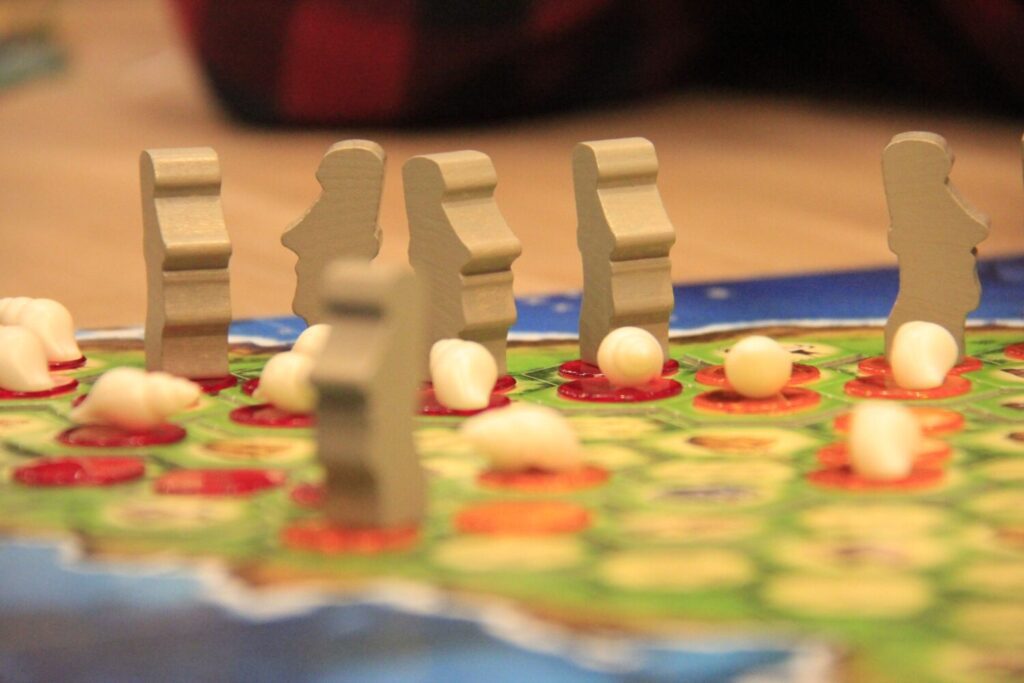
It’s a rather brilliant representation of the ecocide hypothesis that explains the decline of the Rapa Nui population. Popularised by author Jared Diamond in his 2005 book Collapse, the ecocide hypothesis suggests that over-exploitation of Rapa Nui’s environment and natural resources resulted in societal collapse and a population crash. Widespread deforestation was especially problematic: logs were thought to be essential for moving the Moai into position (as seen in Orongo’s box cover) and for boat building, but the removal of almost all the trees on the island led to soil erosion, severely limiting agricultural productivity. The theory explains why the island’s population was so low when Europeans encountered it in 1722.
Through Orongo Knizia cleverly models the declining environment caused by over-exploitation, and shows how constructing the costly Moai had devastating long-term implications for the craftsmen and their descendents. Despite its bright colours and fun components, Orongo turns out to be a game about hastening the self-inflicted collapse of the Rapa Nui civilisation, reflecting our Motu Nui discussion at the start of this article.
Except the birdman thing isn’t the only historical inaccuracy that Orongo commits…
In fairness to Knizia, in 2014 the ecocide hypothesis was still less than a decade old, its narrative neatness and patronising colonial attitude yet to feel uncomfortable. Twenty years on from Collapse, however, Rapa Nui’s pre-European history isn’t discussed with damning language such as ‘extinction’, ‘civil war’, ‘chaos’ and ‘cannibalism’.
Archaeological and genetic research published since 2014 now suggests that there wasn’t actually a dramatic population decline before European arrival, and that the population was fairly stable. A decline did happen but it was after the Europeans arrived and as a result of introduced Polynesian rats, diseases such as smallpox and that old European chestnut: slavery.
Even the theories for how Moai were moved (rolled on logs or on wooden sledges) which implied deforestation are now less supported. The current favoured theory is that the statues were ‘walked’ – rocked from side to side with ropes and specifically carved in such a way as to make the process easier.
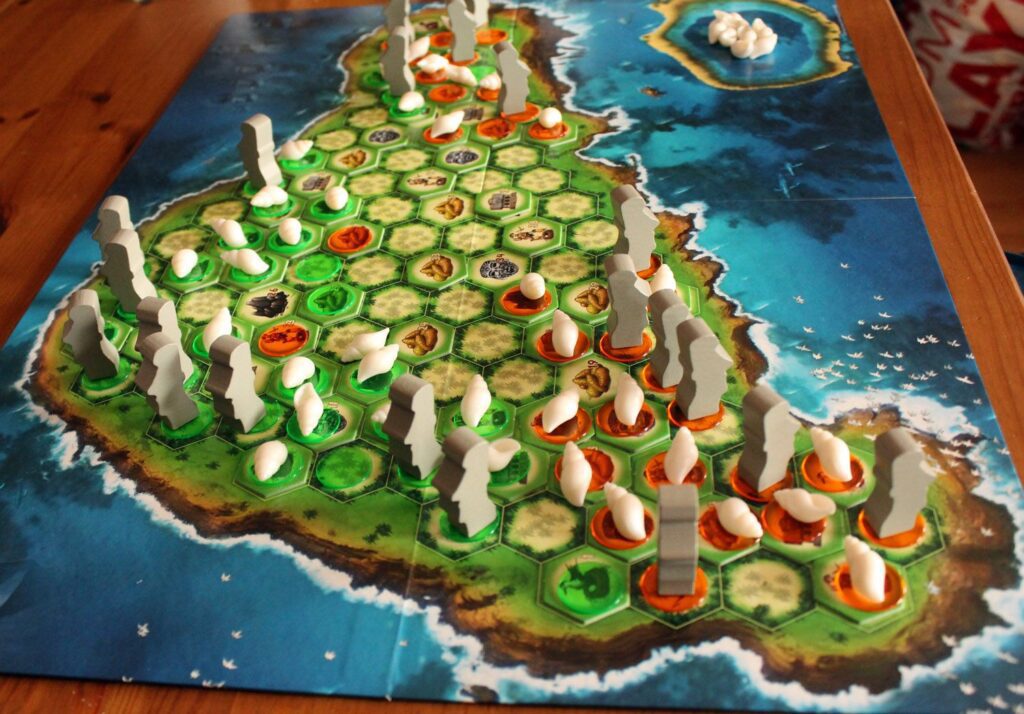
Orongo is a fascinating example of a game that was built on historical theory which within a few years turned out to be unlikely. It’s wonderfully thematic and yet utterly incorrect, from the title to its mechanisms. If you’re interested in the changing theories around Rapa Nui, we recommend these articles:
- The truth about Easter Island: a sustainable society has been falsely blamed for its own demise, 2017, Cat Jarman, The Conversation.
- Rethinking Easter Island’s Historic ‘Collapse’, 2020, Tom Garlinghouse & Sapiens, Scientific American.
- The ‘walking’ statues of Easter Island, 2022, Sarah Brown, BBC.
- Genetic Evidence Overrules Ecocide Theory of Easter Island Once And For All, 2024, Carly Cassella, Science Alert.
All that being said, as a game Orongo is widely regarded among fans as one of Knizia’s best kept secrets. “Orongo is arguably the most underrated hidden gem Knizia design in his entire ludography,” says Nick Murray of Bitewing Games, ranking it 27th in his 2024 edition of his Top 100 Board Games of All Time list, “Orongo combines two of Knizia’s greatest strengths into one beautiful competition… Thanks to the mind games at play within this shrinking economy, I’ve never seen a simultaneous auction done better than Orongo”. Mike DiLisio of the Dice Tower agrees: “I feel like if this was released during the “Golden Age” of Knizia, it would be held in similar esteem to some of his top tier games. It’s a game that feels classic, yet not dated. I see this game getting played a lot, and becoming a permanent fixture in my collection.”
Sadly not everyone agreed, mainly because its release and reception was marred by some questionable production choices. Those shells are deeply impractical, prone to rolling out of position at the slightest table nudge. The colours of the tiles, board and translucent markers, meanwhile, are awful, making the game almost unplayable without both perfect eyesight and light conditions.
Doug Adams writes on BoardGameGeek that the game had originally been slated for a 2015 release but publisher Ravensburger rushed the production to present it at Essen Spiel 2014. Knizia himself was apparently unaware that it was going to be at the show, having not given his sign off, and “was not amused”. “The sad thing for Orongo is that I love the game mechanics,” says Dale Yu of The Opinionated Games, “but the production makes it hard to play”. A second edition was released that slightly improved the production issues but by that time the damage was done and Orongo faded into Knizian legend.
“The game is packed with Knizian tension that is bursting out of every minute of its lightning fast 40-minute playtime,” Murray said in 2023 when discussing his Top 15 Tile Placement Games, “I wouldn’t be surprised if this game gets a new edition sometime in the next couple years.”
What did you know, Nick?
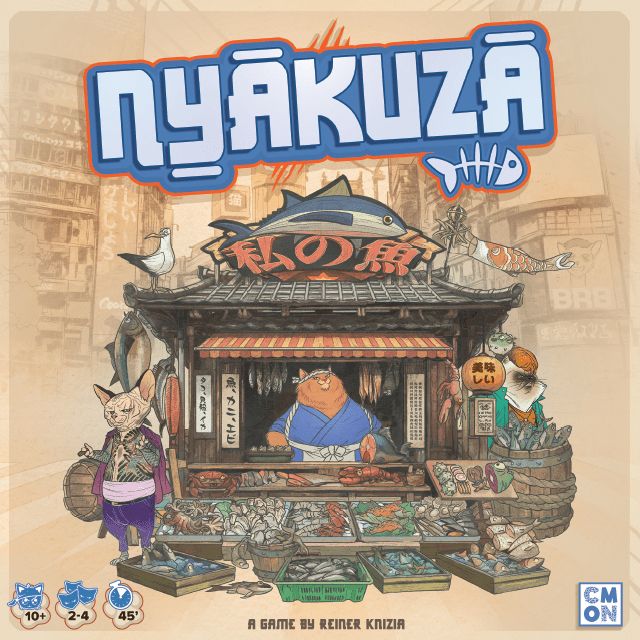
Exactly as Murray predicted, in early 2025 publisher CMON released a rethemed version called Nyakuza. Whether the new theme of Cat Yakuza Clans fighting for dominance over fish markets is as a result of the changing Rapa Nui evidence or simply the popularity of anthropomorphic animals as a tabletop theme we don’t know (although we’d guess it’s the latter!).
With a new publisher and an additional decade and a half of board game production knowledge and techniques, Nyakuza is surely the definitive version to play, right? Right?!?
Um…
It turns out that Orongo is a difficult game to make well.
“It’s a very tight, really rewarding game,” says The Dice Tower’s Sam Healey of Nyakuza, before listing the production issues that make it hard to play and, as a result, not a game he’ll be holding on to. Whilst the tiles stand out from the board far better than the original, the transparent markers (this time boats as players control the fishing in Oki-Yo Bay) are just as hard to differentiate, whilst a couple of the fish types on the tiles (notably salmon and tuna) can also prove difficult to tell apart. “Ultimately, the production takes a 4.5-star system and throws it right out the window,” says Brandon Bryson of Board Game Quest, “CMON really dropped the ball on this one… Classic Knizia meets modern lack of respect”.
Orongo, then, is one of the most unfortunate games in Knizia’s catalogue. Released at a time when the hobby had turned its back on the designer, centred around a mechanic that similarly had fallen from favour (auctions), designed around a theme that within a few years was shown to be historically inaccurate, and plagued by debilitating production in both the original Rapa Nui and new cat criminal versions, Orongo never stood a chance.
Despite everything, many still regard it as a game well worth exploring, its core principles of blind bidding and a shrinking economy interesting and unique. Embattled by birdmen and hungry sharks, Orongo remains a hidden gem in the good doctor’s library.
Organising Other Options in Knizia’s Oeuvre
Oh, how often we ogled other objects in our observation of ‘O’! Our optimal ones are on hand:
Odd Socks – Originally released in 1999 as Relationship Tightrope, 2021’s Odd Socks released by Japanese publisher Korokorodou is a trick-taking game where the highest and lowest cards played get ‘rewarded’ with red or blue socks. Red socks pair with blue socks and the goal of the game is to have the fewest odd socks left at the end. Players need to navigate the changing round ‘rewards’ and manage their hand of cards to succeed with the laundry! Light as a feather but rarely anything less than a good time.
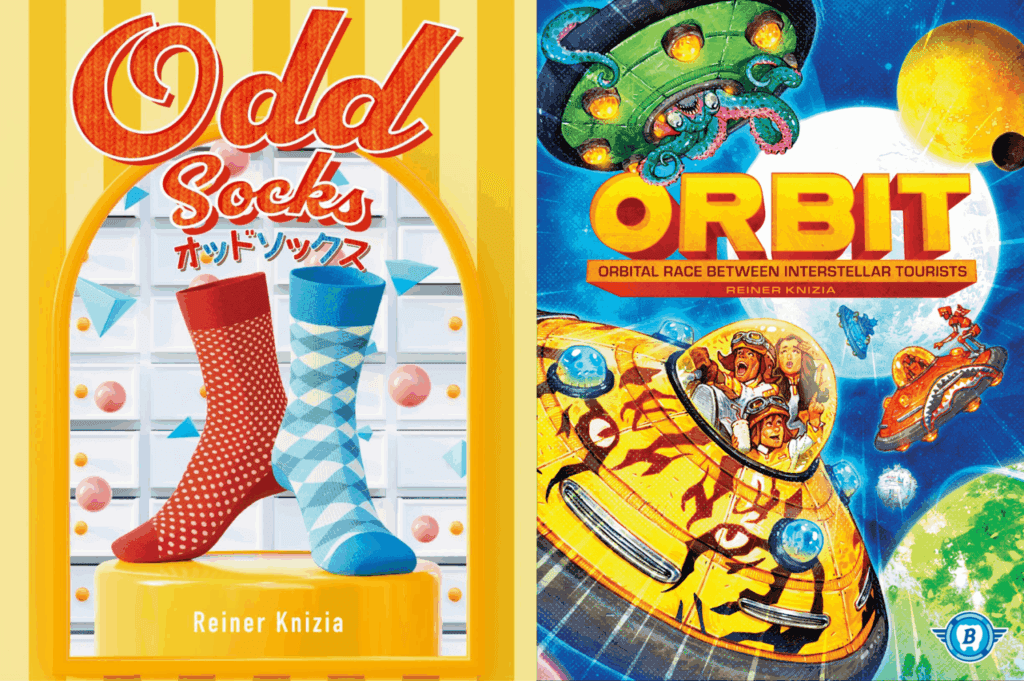
Orbit – Just slipping in under the net, 2025’s Orbit is an interplanetary racing game where players are trying to visit each planet but the planets themselves are moving targets as they orbit the ‘Silo System’. The Dice Tower recently scored Orbit 8s and above, praising its accessibility and the way more modules can be added to it to make it more complex. “It gives you thinkiness,” said Tom Vasel, “but also the silliness of a race, and it’s a good combo of those”.
Oregon – Released in Knizia’s 1995 book Blazing Aces: A Fistful of Family Card Games, Oregon is a poker-based game that uses a standard deck of playing cards. Its featured image on the BoardGameGeek database is simply the rules, written out in 70 words, at least one of which is superfluous. Considering both Knizia and Poker are notably interactive, Oregon is included here for being a solo game and if you read the book it’s found in you’ll discover Portland, a multiplayer version of the game.
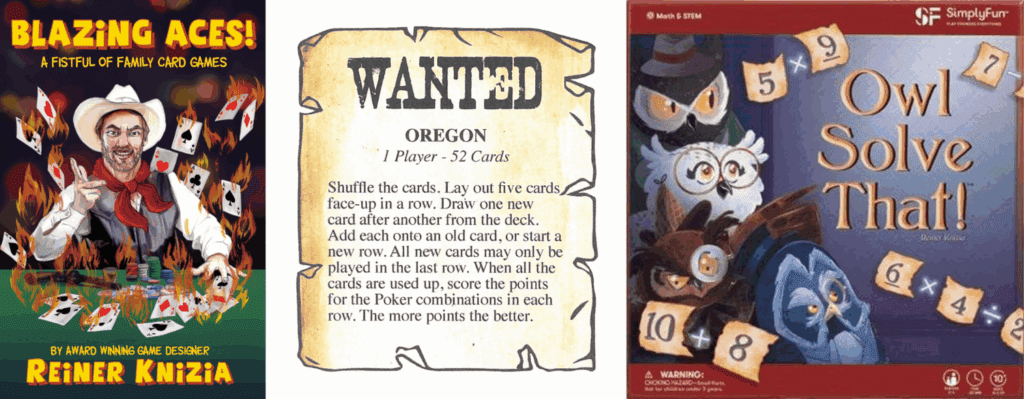
Owl Solve That! – A 2017 release that nicely sums up (ha!) several interests of Knizia. Owl Solve That! is a reimplementation of 2006’s Primo Calculino and is a children’s educational maths game that sees players racing to create simple equations by adding, subtracting, multiplying and dividing numbers to reach the value of a solution card. Think of it like the numbers round of long-running television show Countdown, only for 10 year olds and without a panic-inducing clock.
–
Our ‘O’ odyssey is over. What did you think of our offering? Do you object, finding our opinions offensively onanistic and owing the ordering of our ostracism? Or will you operate a standing ovation and ordain us for our obviously outstanding oblation? How would you have organised ‘O’? Share your opinions in the comments below and observe the rest of the Reiner Knizia Alphabet here!


